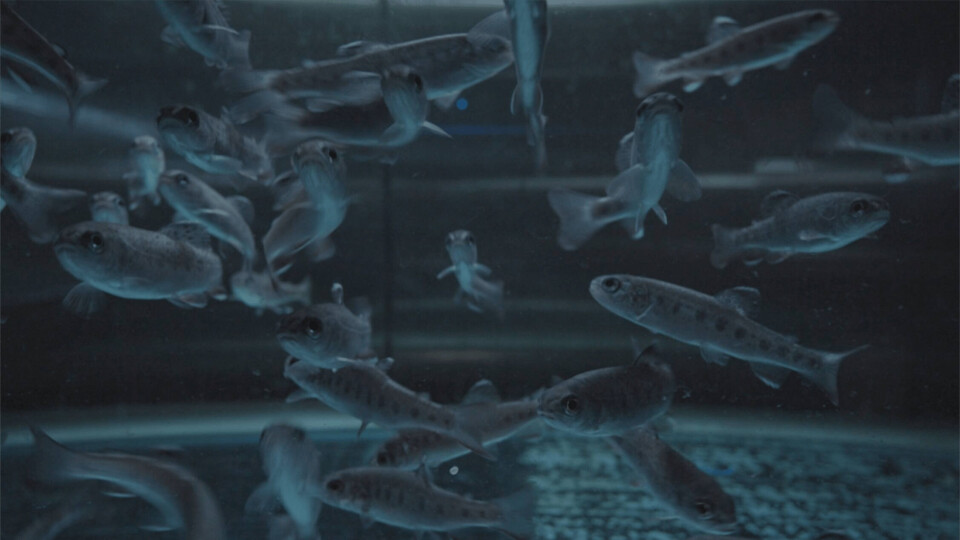
Constant light made trout more susceptible to lice
The body clocks of rainbow trout shape daily rhythms of their immune system and the microorganisms that inhabit their skin, according to new research. And keeping fish under constant light – often used by fish farms to enhance growth or control reproduction – disrupts these daily rhythms and leads to increased susceptibility to parasites.
The work by researchers at Bangor, Cardiff and Aberystwyth universities, published as an open access paper in the journal Microbiome, demonstrates how important understanding the “chronobiology” of animals is for maintaining their health, Bangor University said in a press release.
Lead author Dr Amy Ellison, a lecturer at Bangor University’s School of Natural Sciences, said: “Rainbow trout have daily or ‘circadian’ rhythms in their immune activity and these rhythms appear to shift the composition of the microbial communities which live on their skin over day-night cycles. These fish skin ‘microbiomes’ are a first line of defence against invading parasites and pathogens, so this could be very important for their health.
Pathogenic bacteria
“We found that raising fish under continuous light severely impacted the timings of their immune system and microbiomes. Worryingly, when infected with parasitic skin lice (Argulus foliaceus), fish under constant light were less able to rid themselves of infection.”
The research also revealed lice infections significantly alter trout skin microbial communities, increasing the abundance of pathogenic bacteria.
Co-author Professor Jo Cable from Cardiff University School of Biosciences said: “This is the first study to look at the daily rhythms of fish microbiomes. There is increasing interest in the aquaculture industry to maintain ‘healthy’ microbiomes in farmed fish to improve their disease resistance. However, current farming practices could have unintended consequences for fish health.”
Chronotherapies for fish
Co-author Dr David Wilcockson from Aberystwyth University Institute of Biological, Environmental and Rural Sciences added: “Chronotherapies - the appropriate daily timing of vaccines and other treatments - is beginning to revolutionise human medicine. But this is yet to be applied to farmed animals. Our study raises the possibility similar approaches could be used to help maintain fish health and welfare on farms.”
The study is part of a BBSRC (Biotechnology and Biological Sciences Research Council) Discovery fellowship funded project to investigate the chronobiology of fish, their parasites and microbiomes.
Read the study, “Circadian dynamics of the teleost skin immune-microbiome interface”, here.






















































